Qiumin Xu
A Language Agnostic Multilingual Streaming On-Device ASR System
Aug 29, 2022
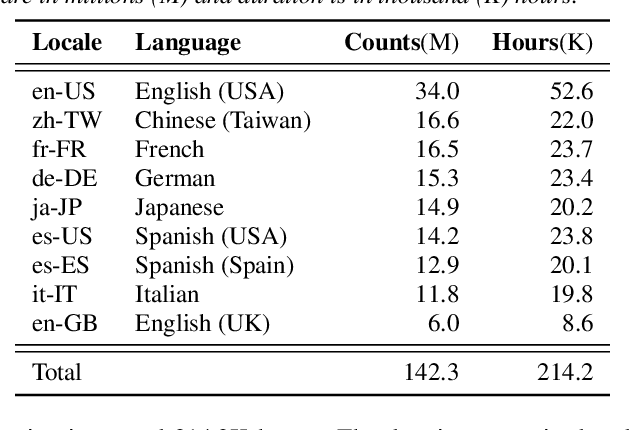


Abstract:On-device end-to-end (E2E) models have shown improvements over a conventional model on English Voice Search tasks in both quality and latency. E2E models have also shown promising results for multilingual automatic speech recognition (ASR). In this paper, we extend our previous capacity solution to streaming applications and present a streaming multilingual E2E ASR system that runs fully on device with comparable quality and latency to individual monolingual models. To achieve that, we propose an Encoder Endpointer model and an End-of-Utterance (EOU) Joint Layer for a better quality and latency trade-off. Our system is built in a language agnostic manner allowing it to natively support intersentential code switching in real time. To address the feasibility concerns on large models, we conducted on-device profiling and replaced the time consuming LSTM decoder with the recently developed Embedding decoder. With these changes, we managed to run such a system on a mobile device in less than real time.
Transferable Graph Optimizers for ML Compilers
Oct 21, 2020


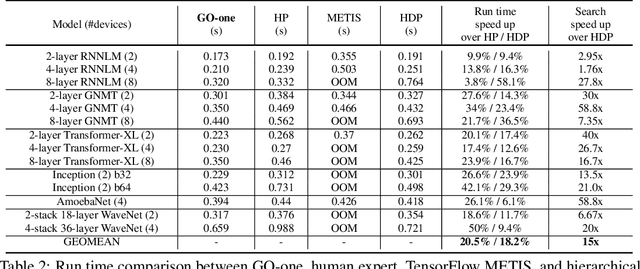
Abstract:Most compilers for machine learning (ML) frameworks need to solve many correlated optimization problems to generate efficient machine code. Current ML compilers rely on heuristics based algorithms to solve these optimization problems one at a time. However, this approach is not only hard to maintain but often leads to sub-optimal solutions especially for newer model architectures. Existing learning based approaches in the literature are sample inefficient, tackle a single optimization problem, and do not generalize to unseen graphs making them infeasible to be deployed in practice. To address these limitations, we propose an end-to-end, transferable deep reinforcement learning method for computational graph optimization (GO), based on a scalable sequential attention mechanism over an inductive graph neural network. GO generates decisions on the entire graph rather than on each individual node autoregressively, drastically speeding up the search compared to prior methods. Moreover, we propose recurrent attention layers to jointly optimize dependent graph optimization tasks and demonstrate 33%-60% speedup on three graph optimization tasks compared to TensorFlow default optimization. On a diverse set of representative graphs consisting of up to 80,000 nodes, including Inception-v3, Transformer-XL, and WaveNet, GO achieves on average 21% improvement over human experts and 18% improvement over the prior state of the art with 15x faster convergence, on a device placement task evaluated in real systems.
* arXiv admin note: text overlap with arXiv:1910.01578
GDP: Generalized Device Placement for Dataflow Graphs
Sep 28, 2019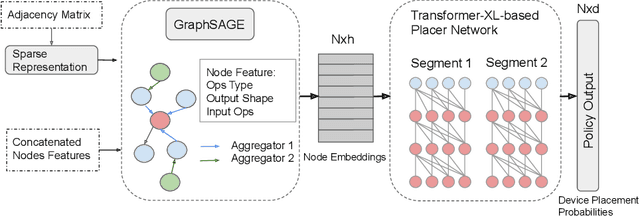
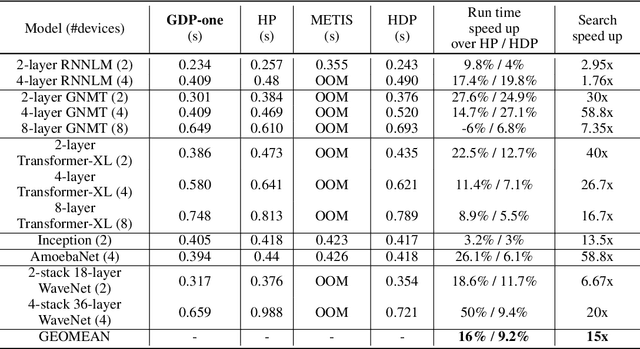

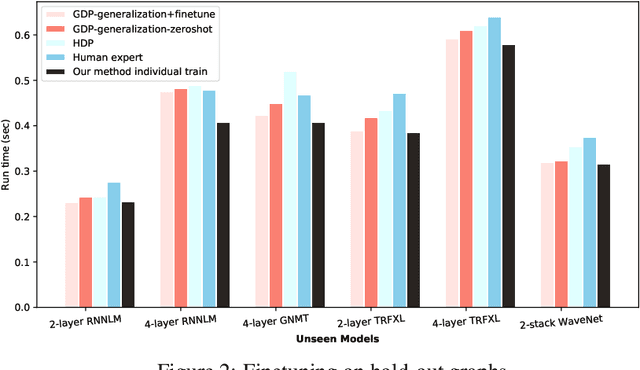
Abstract:Runtime and scalability of large neural networks can be significantly affected by the placement of operations in their dataflow graphs on suitable devices. With increasingly complex neural network architectures and heterogeneous device characteristics, finding a reasonable placement is extremely challenging even for domain experts. Most existing automated device placement approaches are impractical due to the significant amount of compute required and their inability to generalize to new, previously held-out graphs. To address both limitations, we propose an efficient end-to-end method based on a scalable sequential attention mechanism over a graph neural network that is transferable to new graphs. On a diverse set of representative deep learning models, including Inception-v3, AmoebaNet, Transformer-XL, and WaveNet, our method on average achieves 16% improvement over human experts and 9.2% improvement over the prior art with 15 times faster convergence. To further reduce the computation cost, we pre-train the policy network on a set of dataflow graphs and use a superposition network to fine-tune it on each individual graph, achieving state-of-the-art performance on large hold-out graphs with over 50k nodes, such as an 8-layer GNMT.
 Add to Chrome
Add to Chrome Add to Firefox
Add to Firefox Add to Edge
Add to Edge